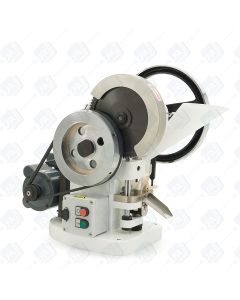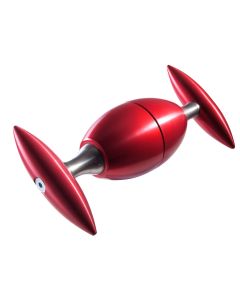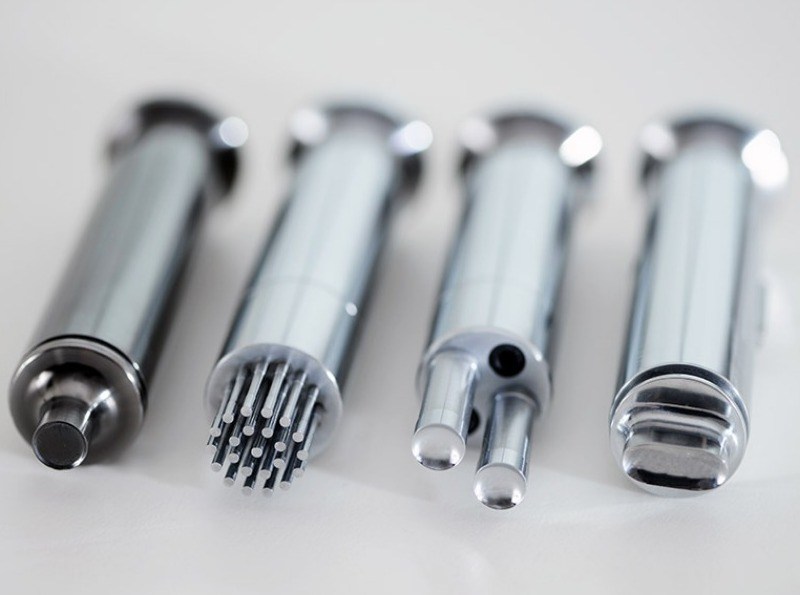It has always been difficult to market a tablet in the industry today. Aside from time and capital, research and development is also important; that said, one of the most difficult phases is the actual production of the tablet. Plenty of issues arise during production, including tablet quality to downtime of tablet equipment, which can result to delay in shipping of the product. There are steps that one can take to eliminate as well as minimize the issues before manufacturing actually begins.
Intro to Tableting Part II | Introduction to Tablet Making Part 2
Tablet Coating
Tablets can be enhanced by coating with a sugar or polymer film. The coating serves several purposes:
- it can add colour or gloss finish to the product giving enhanced customer appeal
- it can mask the taste of the underlying material which patients may find unpalatable
- it can be marked with a logo, to enhance the branding of the product
- it can extend the tablet lifetime by protecting the product and API from harmful contaminants in the environment
- it can influence the disintegration rate of the product, for example, allowing tablets to pass through the acidic environment of the stomach, and breakdown in the intestinal tract rather than in the gastric fluids.
Sign Up to Our Newsletter
Basic equipment required for coating
The traditional method of coating tablets uses a coating pan in which the tablets are swirled within an aqueous or non-aqueous solution of the coating material. More recent methods include a perforated pan in which provides a means of draining the coating liquid and a fluidized-bed coater in which the pellets are coated whilst being in a fluidized state by a flow of air. The following are representative of the various coating machines that are now available:
- Traditional Coating Pan
- Immersion sword system
- Pellegrini pan system
- Immersion tube system
- Perforated Pan System
- Driacoated
- Glatt Coater
- Hi-Coater
- Accela Cota
- Fluidized Bed Coater
In the case of the pan-coating method, pan speeds of 10-15 rpm are recommended for non-aqueous solutions of coating material, and speeds of 3-10 rpm for aqueous solutions.
For sugar coating, several layers may be built up to ensure adequate sealing of the tablet and a professional surface finish. The first stage is to provide a waterproof seal which helps harden the tablet and creates a barrier to prevent ingress of moisture. Any of the following common sealants may be used for waterproofing/sealing of tablets:
- Propylene glycol
- Shellac (probability of an increase in the disintegration and dissolution due to polymerization and can lead to low bioavailability of the tablet)
- PEG 4000
- Zein
- Cellulose acetate phthalate (CAP)
- Oleic acid
- Polyvinylacetate phthalate
- Dusting Powder/Subcoat
- Acacia gum
- Calcium carbonate
- Kaolin
- Cane sugar
- Dextrose
- Corn starch
- Talc
- Calcium sulfate
Once the tablet is sealed, a smoothing layer may be applied which is usually a syrup of sugar (e.g., can sugar, dextrose, glucose) and gum/wax (e.g., white beeswax, carnauba wax). This may also contain a colour to enhance the appearance of the tablet. Finally a polishing step is usually given to complete the coating process, which helps give the tablet its lustre or gloss.
The alternative to sugar coating is that of polymer film coating. Methods may be employed to coat films include:
- Pan Pour Method – this traditional method is now rarely used as it has several disadvantages: (a) requires additional steps such as drying to help remove solvents, (b) slow, (c) requires manual operation and (d) aqueous based coatings are not preferred for this method (they cause overwetting of the tablet)
- Pan Spray Method – it is more preferred than the Pan Pour method as the process can be automated thereby giving increase efficiency.
- Air- fluidized bed with polymer spray
Polymer film formers include:
- Hydroxy Propyl Methyl Cellulose (HPMC) – ideal for pan spray coating system as well as for air suspension. The polymer is soluble in gastric fluid, water and organic liquids.Disadvantage – when the film former is used by itself, it tends to bridge or de-boss the surface of the tablet. HPMC must therefore be mixed with other plasticizers or polymers.
- Methyl Hydroxy Ethyl Cellulose (MHEC) – it is rarely used as it is soluble/compatible with some organic solvent.
- Ethyl Cellulose (EC) – EC is normally combined with other water soluble additives such as HPMC due to its insolubility in water and gastric fluids. Unplasticized EC films tend to be weak and needs modifiers in order to obtain the correct formulation.
- Hydroxy Propyl Cellulose (HPC) – HPC is soluble below 40°C in water but insoluble above 45°C. It is also soluble in other polar organic solvents and gastric fluids.
- Povidone – available with average molecular weights of 10k, 40k and 160k, 360k; K-30 is the most commonly used in coating and binding tablets; 4 viscosity grades are available (K-15, K-30, K-60, K-90)
- Polyethylene glycols (PEG) – the (200-600) low molecular weight PEG is liquid at room temperature and is often used as plasticizer. High molecular weight PEG (900-8000) on the other hand is a white and waxy solid at room temperature. The combination of the PEG waxes with CAP gives provides a soluble film.
- Acrylate polymers – these are marketed under Eudragit brand. Eudragit E is a cationic co-polymer that is based on Poly (methyl) acrylates. The Eudagit E swells when exposed to gastric fluid at up to pH 5.0. It is also freely soluble in gastric fluids. The polymers produces films that delays action. The Eudragit RL and RS copolymers have low quaternary ammonium content.
Enteric Polymer Materials
These materials are stable in gastric fluids, typically lower than ph 5.0. Above ph 5.0 they become soluble ins aqueous solutions and will therefore cause the tablet to disintegrate once it has passed through the stomach and into the intestinal tract. Examples include:
- Cellulose acetate phthalate (CAP) – the most commonly used enteric film coating. It is soluble above pH 6.
- Aquateric – patented aqueous dispersion of CAP (marketed by FMC Corp. USA); particle size in aquateric .05 – 3 micron (CAP)
- Acrylate polymers
- Hydroxypropyl methylcellulose phthalate - Common brand names: HP-50, HP-55, HP-55-S. It is less soluble at below PH (5 to 5.5) than other polymers.
Plasticizers may be added to the film solution to change the physical characteristics of the polymer. It changes the tensile strength, flexibility, adhesion properties of films and also modifies the polymer-polymer interaction. Commonly Used Plasticizers include:
- Castor oil
- Surfactants
- Propylene Glycol (PG)
- Lower molecular weight (200-400 series) PEG
- Glycerine
PEG and PG are employed in aqueous coating solutions whereas castor oil use organic solvent coating solutions.
Often in tablet mixes (pill mixes) a colorant is added to help distinguish the final product. The concentration used depends on whether a light colour (0.01%) or dark colour (2%) is required. Commonly used colourants are:
- Lakes (most preferred)
- Anthocyanins
- Iron oxides
- Carotenoids
- Caramel
- Flavones
- Chlorophyll
- Carminic acid
- Turmeric
Rather than colouring the tablet formulation, colours may be added to the film. Example materials are Opalux, which is used for sugar coating, and Opadry or Opaspray that are used for film coating. Opaquant extenders help to disperse the colourant throughout the film, leading to less of the expensive colorants being required. Examples of Opaquant Extenders are:
- Aluminum hydroxide
- Aluminum oxide
- Calcium sulfate
- Magnesium oxide
- Talc
- Titanium dioxide (commonly used)
Film Defects
Several issues can arise that mar the appearance of tablet films. The following are common examples:
Sticking/picking – happens when there are some areas of the film that are pulled away from the surface of the tablet. It may also be due to tablets sticking together or when overwetting by the film solution occurs causing the tablet to stick to the pan, causing the core of the tablet to be exposed. Sticking/picking may be prevented by - (i) reducing the application times of the coating solution and (ii) increasing the inlet air temperature.
Roughness – this defect happens when the polymer to be applied dries before reaching the coating pan’s base. Methods of prevention include – (i) move the spray atomizer deeper into the coating pan and (ii) decrease the rate of atomization
Orange peel effect – this surface defect gives a non-glossy or rough appearance to the tablet – look the surface of an orange. It can be prevented by (i) adding more solvent to help reduce the viscosity of the solution and (ii) using mild drying condition.
Bridging & Filling – happens when the film pulls away from the tablets bisect area. May be prevented by changing the plasticizer or increasing its concentration
Blistering – this occurs when there is fast and rapid drying of the solvent. The solution is to use mild drying conditions.
Hazing – the tablet’s coating becomes dull after a long period of being stored at high temperature. Hazing is prevented by – (i) increasing the molecular weight of the plasticizer and/or (ii) reducing the concentration of the plasticizer.
Colour Variation – this is a defect that gives rise to the tablets having different colours. It is usually prevented by – (i) using medium drying conditions (ii) reformulating the plasticizer or additives used (iii) proper mixing of the colourant and other film materials.
Cracking –the film can crack around the crown of the tablet or split around the edges. It may be prevented by adjusting the concentration and type of plasticizer used.









